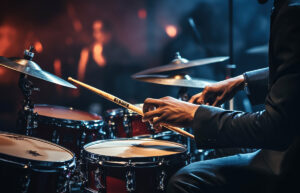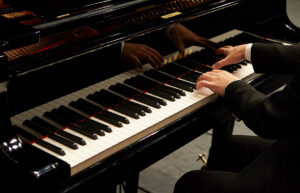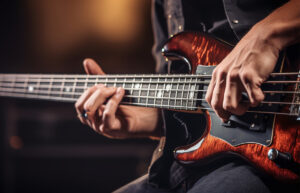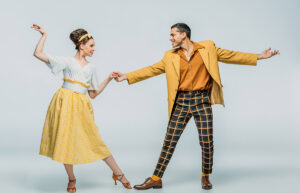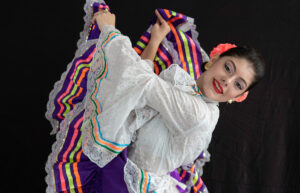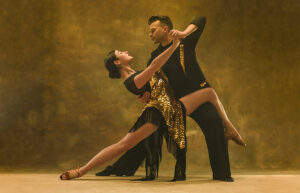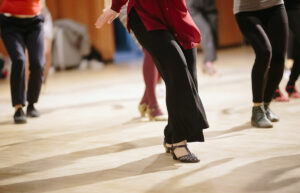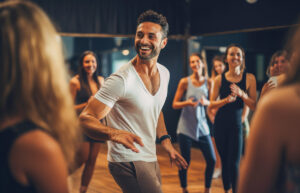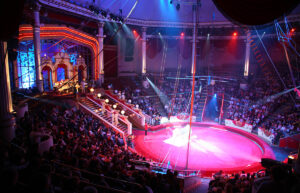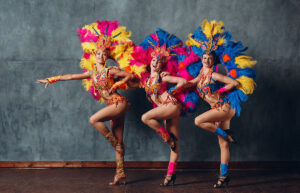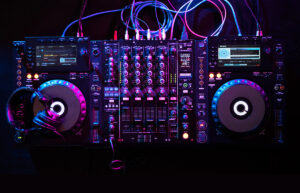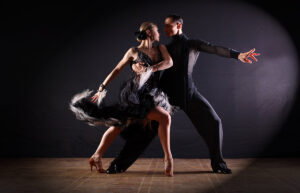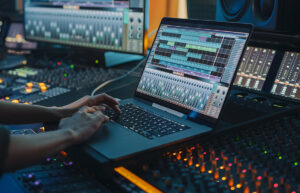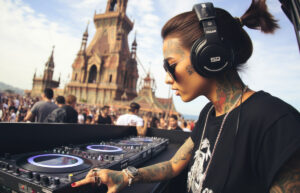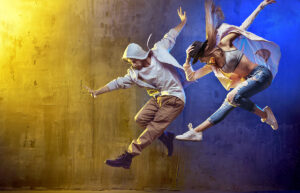What is Contemporary Dance: Meaning, History, Techniques, Steps & Tips

In the realm of modern dance, the question of what is contemporary dance echoes through dance studios and theaters worldwide, igniting a passion for exploration and self-expression among dancers and enthusiasts alike. This guide delves into the heart of contemporary dance, tracing its evolution, dissecting its techniques, offering practical tips for preparation and improvement, and paying homage to the pioneering figures who have sculpted its dynamic landscape.
Welcome to TheDemoStop, now join the community!
Connect with artists, fans and producers around the world.
What is contemporary dance?
Contemporary dance, born in the mid-20th century, defies the norms of traditional ballet and modern dance, embodying fluidity and expression. So, what is contemporary dance? It’s an expansive art form, embracing diverse movement styles and techniques, prioritizing versatility, creativity, and personal expression.
Contemporary dance thrives on improvisation, floor work, and partnering, enabling dancers to forge novel connections with music, emotions, and space. This ever-evolving genre mirrors the contemporary cultural, social, and artistic environment.
Brief history of contemporary dance
In the late 19th and early 20th centuries, classical ballet’s limitations sparked a revolution in dance led by innovators like Isadora Duncan and Martha Graham. They broke away from tradition, focusing on expressing emotions and individuality through modern dance.
As time progressed, this evolved into contemporary dance, with choreographers like Pina Bausch and William Forsythe pushing boundaries even further.
So, what is contemporary dance in today’s era? So, it’s an art form that keeps evolving, reflecting the complexities of our world through innovative choreography, diverse movements, and collaborations across different fields.
Contemporary dance techniques
Graham
The Graham technique, crafted by Martha Graham, emphasizes contraction, release, spiraling movements, and dramatic expression. It delves into the interplay of opposing forces within the body, enabling dancers to communicate intense emotions and psychological states through gestures. This technique often features deep, grounded movements that activate the core muscles and delve into struggle, liberation, and catharsis themes.
Limon
Founded by Jose Limon, the Limon technique emphasizes using breath, weight, and suspension to create expansive, fluid movement. It seeks to cultivate a sense of dynamic balance and connectivity between the dancers to explore the full range of motion of their bodies, from flowing gestures to powerful, dynamic leaps. So, it fosters a sense of expressiveness and authenticity in their movement.
Release
The release technique, pioneered by dancers such as Mary Fulkerson and Steve Paxton, centers on releasing tension, letting go of unnecessary rigidity, and embracing freedom in movement.
The contemporary dance technique highlights the link between breath and motion, urging dancers to delve into organic, flowing movements and articulate their bodies with fluidity and grace. This approach often incorporates floor work, improvisation, and thoroughly investigating the body’s natural alignment and kinetic chains.
Improvisation
Improvisation is a key component of contemporary dance, allowing dancers to explore spontaneous movement and creative expression in the moment. It encourages dancers to trust their instincts, explore new movement possibilities, and engage with their surroundings and fellow dancers in playful and collaborative ways.
Improvisation can take many forms, from structured improvisation scores to completely free-flowing movement exploration, offering dancers a platform for self-discovery, experimentation, and artistic exploration.
Contact Improvisation
Contact improvisation, developed by Steve Paxton and others in the 1970s, is a form of improvised dance that explores the principles of touch, weight sharing, and spontaneous movement interaction between dancers. It involves continuous physical contact between dancers, one leading and the other responding, creating a fluid and dynamic exchange of energy and movement.
How to prepare for a contemporary dance
What to wear?
For a contemporary dance session, wear form-fitting, comfortable clothing like leggings and a breathable top to allow freedom of movement. Opt for supportive dance shoes or go barefoot, depending on your preference and choreography requirements.
Prepping your dance space
To prep your dance space, clear clutter for safety, use a non-slip floor and adjust lighting for mood. Remove obstacles, ensure adequate lighting, and consider adding music or props for expression.
Prepping your body
Before dancing, warm up with gentle stretches to increase flexibility and prevent injuries. Focus on major muscle groups like legs, hips, back, and shoulders. Use dynamic movements like lunges and chair rotation to activate muscles and increase blood flow.
Explore movement and expression
Embark on a journey of movement and expression. Experiment with dynamics, textures, and spatial pathways to explore movement deeply. Connect with music and emotions to express yourself authentically, and embrace improvisation to unleash creativity and authenticity in your movement.
Welcome to TheDemoStop, now join the community!
Connect with artists, fans and producers around the world.
Focus on technique and form
Focus on technique and form to ensure efficiency and safety. Pay attention to alignment, posture, and muscle engagement. Refine elements like balance and coordination for clarity and precision. Use specific drills like Graham contractions to develop skills and artistry.
Contemporary dance tips
Build body awareness
Enhance your body’s awareness and understanding of its capabilities. Notice how various muscles engage, and movements influence your posture and alignment. Engage in exercises like body scanning and guided imagery to boost proprioception and kinesthetic awareness, refining control and precision in your movements.
Understand eye contact & chin lines
Improving your performance quality involves mastering eye contact and chin lines. Practice maintaining soft, engaged eye contact with your audience or fellow dancers to establish a connection and convey emotion. Also, be mindful of your chin line, keeping it lifted and elongated to exude grace and presence onstage.
Explore different movement qualities
Discover diverse movement qualities to enrich your capabilities. Embrace versatility by exploring fluidity, sharpness, weightness, and lightness. Move authentically and dynamically, adapting to various styles and choreographic intentions.
Practice safe movements
Ensure safety in your dance practice by prioritizing safe movements. Start by practicing proper technique and tuning into your body’s signals. Begin with a thorough warm-up to prepare your muscles and joints, and remember to include cooldown exercises to prevent injury and aid recovery. Listen to your body and avoid pushing beyond your limits. If you experience any discomfort or pain, seek guidance from a qualified instructor.
Familiarize yourself with ballet, jazz, and other dance forms
Expand your dance knowledge and skill set by familiarizing yourself with foundational dance styles such as ballet and jazz. Study their techniques, terminology, and historical significance to understand dance as an art form better. Incorporate elements from these styles into your contemporary practice to enrich your movement repertoire and enhance your versatility as a dancer.
Choreographers who influenced contemporary dance
Isadora Duncan

Isadora Duncan pioneered modern dance, breaking away from classical ballet and emphasizing natural movement and freedom of expression. Her flowing, lyrical style, inspired by nature and Greek art, laid the foundation for contemporary dance.
Duncan’s focus on individuality, emotional authenticity, and the fusion of dance with music and poetry still influences the dance world today.
Martha Graham
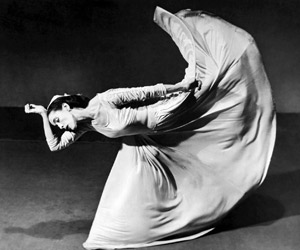
Martha Graham revolutionized contemporary dance with her innovative choreography and expressive technique, exploring emotion, psychology, and mythology themes. Her angular movements and dramatic storytelling techniques challenged tradition, paving the way for a more expressive dance style. Graham’s legacy inspires choreographers and dancers worldwide to push boundaries and delve into the human experience through movement.
Lestor Horton

Lestor Horton, a pioneering choreographer, developed a unique movement technique emphasizing strength, flexibility, and organic expression. His choreographic style, marked by dynamic contrasts and social commentary, broke new ground in contemporary dance. Horton’s commitment to racial integration and social justice greatly influenced the development of contemporary dance, fostering greater diversity and inclusion within the dance community.
Welcome to TheDemoStop, now join the community!
Connect with artists, fans and producers around the world.
Conclusion
What is contemporary dance?
Contemporary dance is a versatile art form that emerged in the mid-20th century, emphasizing creativity, individuality, and innovation in movement.
Brief history of modern/contemporary dance
In the late 19th and early 20th centuries, innovators like Isadora Duncan and Martha Graham revolutionized dance by breaking away from classical ballet’s limitations. They emphasized expressing emotions and individuality through modern dance, which evolved into contemporary dance over time.
Contemporary dance techniques
- Graham
- Limon
- Release
- Improvisation
- Contact improvisation
How to prepare for a contemporary dance?
- What to wear
- Prepping your dance space
- Prepping your body
- Explore movement and expression
- Focus on technique and form
Contemporary dance tips
- Build body awareness
- Understand eye contact & chin lines
- Explore different movement qualities
- Practice safe movements
- Familiarize yourself with ballet, jazz, and other dance forms
Choreographers who influenced contemporary dance
- Isadora Duncan
- Martha Graham
- Lestor Horton
FAQs
What does contemporary style mean in dance?
Contemporary style in dance is a fluid and expressive genre that blends techniques from various dance forms, allowing for personal expression and experimentation in movement.
How do I become a good contemporary dancer?
To become a good contemporary dancer follow the tips listed below:
- Build body awareness
- Understand eye contact & chin lines
- Explore different movement qualities
- Practice safe movements
- Familiarize yourself with ballet, jazz, and other dance forms
How many years does it take to learn contemporary dance?
The time to learn contemporary dance varies depending on individual talent, dedication, and training intensity. However, on average, it takes one to one and a half years to learn contemporary dance. It can also take several years of consistent practice and study to develop proficiency and mastery in contemporary dance.
Is it hard to learn contemporary dance?
Learning contemporary dance can be challenging due to its emphasis on versatility, creativity, and technical proficiency. However, with dedication, practice, and the guidance of a skilled instructor, it is achievable for those who are passionate and committed to the art form.
Why is contemporary dance popular?
Contemporary dance’s popularity stems from its versatility, expressive freedom, and ability to reflect modern cultural themes, appealing to audiences and dancers alike.
Who is the best contemporary dancer?
Isadora Duncan, Martha Graham, and Lestor Horton are a few of the best contemporary dancers the world has ever known.
Who were the choreographers that influenced contemporary dance?
- Isadora Duncan
- Martha Graham
- Lestor Horton



